Violet "Bohemia": description and features of cultivation
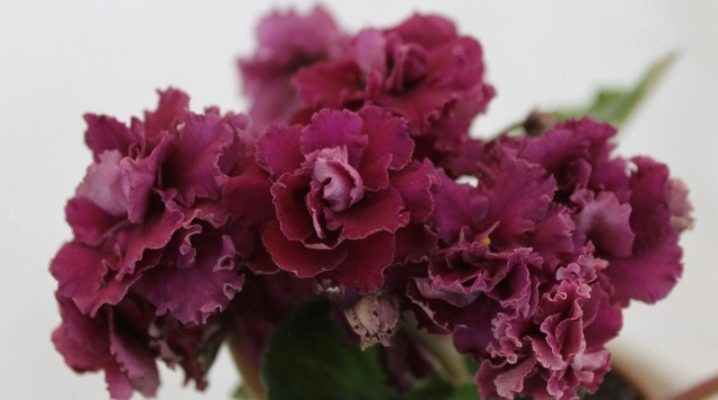
In the flower shops, you can see attractive plants with dark green hairy leaves and beautiful flowers. They are often called violets, but they are saintpaulias. They are known to flower growers as the uzambara violet.
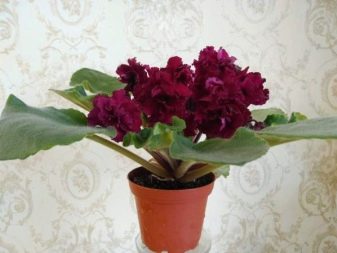
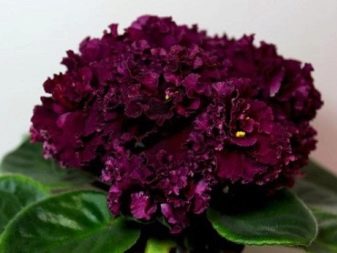
Violets and Saintpaulias
Saintpaulias, popular among gardeners, actually have nothing to do with the flowers of the Violet family. They were discovered by chance in the 90s of the XIX century by the military commandant of the Uzambar district of the German colony in East Africa. It was Baron Walter von Senpole. In his honor, the plant got its specific name - saintpaulia.
Seeds sent to Germany sprouted, and soon the plant was described by naturalist Hermann Wendland as saintpaulia violet-flowered (or violet-flowered). The resemblance of Saintpaulias to violets is indeed present, but only superficially. An African plant with flowers similar to violets began to spread in Europe. Without going into the details of the classification, amateur flower growers very quickly began to call it "violet".
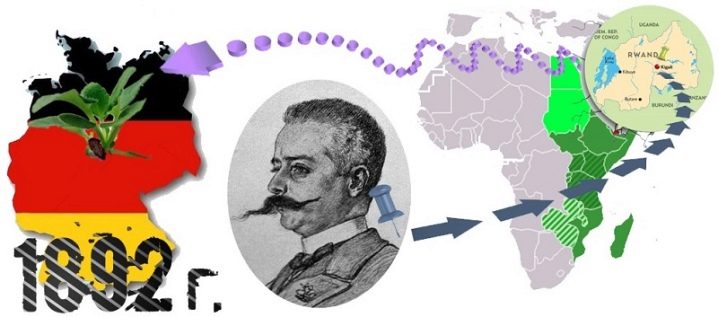
Description
The wild form of Saintpaulia is an inhabitant of East Africa and can be found in the forests of Tanzania and Rwanda. It is an evergreen herbaceous perennial plant with a short stem. Quite hard pubescent leaves form a basal rosette. The shape and color of the leaves varies. Large flowers are collected in cluster inflorescences. Many small seeds ripen in capsule fruits.
On the basis of the wild form, a number of varieties have been bred, differing in the shape of flowers and inflorescences, flowering time, shape, size and color of leaves. Selected varieties are often referred to as hybrid Saintpaulia. The process of their breeding began with the spread of the African flower in Europe.
Variation in color and shape of flowers and leaves became the basis for breeding and subsequent crossing of many varieties, which made it possible to obtain a huge variety of these indoor plants.
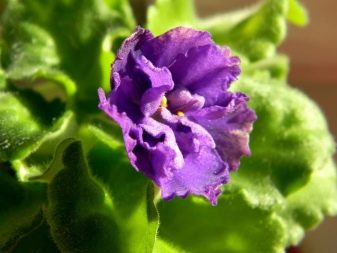
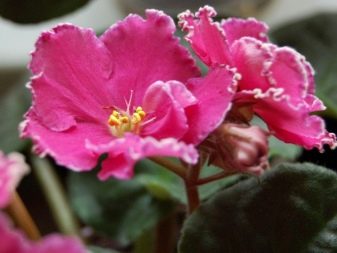
Often, when breeding violets, the so-called sporting occurs, that is, the manifestation of unexpected, not characteristic of the variety, signs. The form obtained in this way is called sports. Often it is sports that become the beginning of work on the development of new varieties.
The least susceptible to this phenomenon are varieties with solid colors, and to a greater extent - varieties with complex selection, combining the properties of a number of original forms. Sporting occurs in connection with the inheritance of both dominant and recessive traits. The latter can appear very rarely and become a surprise for the grower.
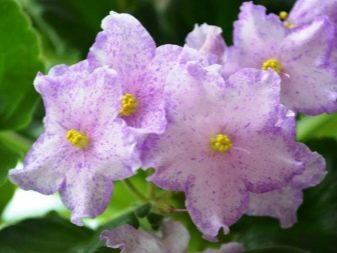
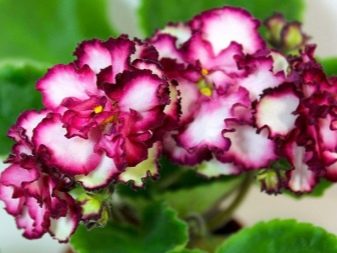
Russian breeders have obtained a number of resistant varieties, among which violets of the Bohemian varietal group are not the last. For example, the original PiK-Bohemia variety breeder M. Pikalova is distinguished by white-pink flowers with rare lilac specks and a brown-green intermittent border on fringed petals. Violet leaves are dense, practically devoid of villi.
The AV-Bohema variety (bred by A.V. Tarasov) began its distribution among flower growers in the middle of the second decade of the 21st century. Violet is distinguished by slightly pointed tips of leaves and double corrugated flowers, collected in dense inflorescences, forming a cap during flowering. The color of the petals is unusual: they are black and burgundy. There are a number of AB-Bohemian sports that differ in the original color of the petals and the shape of the inflorescences. On sale, they are often referred to as AV-Bohemia sport.
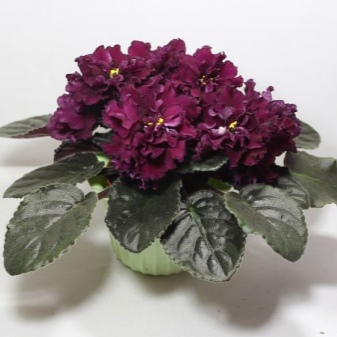
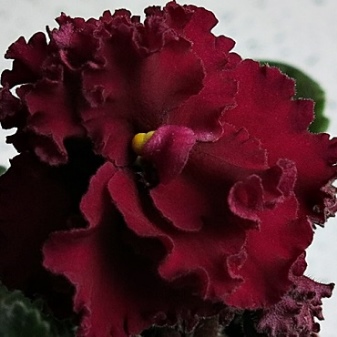
Growing rules
In nature, Saintpaulias grow in tropical rainforests.The soil there is quite light, rich in humus, but in no case waterlogged. Violet grows most often in elevated, and therefore relatively dry areas. The acquired special ready-made soil will not always be a reliable guarantee that your violet will like it. However, flower growers have long developed a recipe for the preparation of a potting mixture that is completely satisfactory for the African violet.
- It is necessary to prepare the ingredients, it is better to do this in the summer. You will need fine river sand, peat and garden soil rich in humus (ideally black soil).
- The steamed ingredients must be thoroughly mixed in a 1X3X5 ratio.
- It is advisable to fill the bottom part of the pot with expanded clay.
- The top layer can be sprinkled with brick chips.
- Planting is carried out in moderately moist crumbly soil.
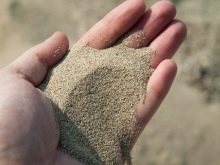

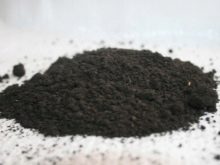
It is better to place the pot with the violet so that direct sunlight does not fall on it. At home in East Africa, it grows under the canopy of a multi-tiered rainforest, sunlight reaches its leaves by the many times scattered crowns of trees. With regard to air temperature, the violet is an excellent pet, it is quite comfortable with the same temperature as for a person (from 18 to 22 °).
Saintpaulia needs at least 50% humidity, which is not always the case in apartments. Air humidity decreases especially noticeably with the beginning of the heating season. Therefore, the flower pot is placed on a pallet with moisture-retaining material: sphagnum moss or expanded clay.
A healthy plant should be watered 1-2 times a week, preferably in the morning. In no case should you overmoisten the soil: excess moisture is destructive for this plant. The decay process can be very difficult to stop. Often it is excessive watering that causes the death of the violet. She is also very capricious about fertilizers. They must be introduced at the beginning of flowering, reducing the dose indicated in the instructions by half.

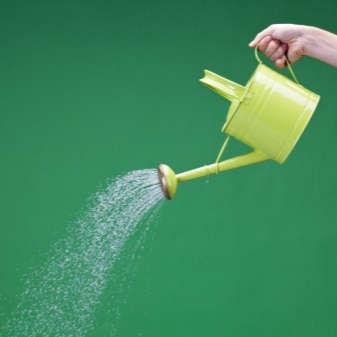
Plastic pots are great for violets: they retain moisture better, which allows you to water the plant less often. The size of the pot is also a very important factor in determining the well-being of Saintpaulia. Often its flowering is delayed because there is too much soil in the pot. A violet blooms when its roots fill the entire volume of the pot.
However, a transplant is necessary and even necessary, so it is better to carry it out in the off-season: in spring or autumn. If transplanted into the same pot, then you will have to reduce the number of roots. To preserve the root system, you need to pick up a slightly larger pot and be prepared for the violet not to bloom for some time. It is imperative to replace the drainage of the pot: unwanted microorganisms can begin to develop in the old one. Transplanting into a smaller pot can stimulate flowering.
Modern varieties of violets are most often propagated using leaves. Saintpaulia has a wonderful feature: it can form young plants on a leaf cut.
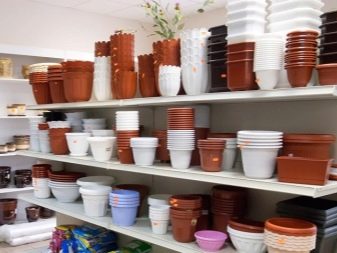

A neatly cut healthy specimen, placed on a properly prepared substrate, yields several young rooting plants.
In the next video you can take a closer look at the Bohemia violet.































The comment was sent successfully.